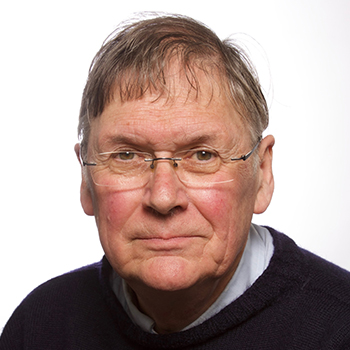Sir Tim Hunt

Aaron Ciechanover
2004 Nobel Prize in Chemistry
Cell division is a fundamental feature of life. It occurs in stages guided by signals that regulate progression through its cycle. In 2001, Professor Sir Tim Hunt, together with Leland H. Hartwell and Sir Paul M. Nurse, were awarded the Nobel Prize in Physiology or Medicine “for their discoveries of key regulators of the cell cycle”. These regulators, known as cyclins and cyclin-dependent protein kinases, are present in all known eukaryotic species and are highly conserved through evolution.
From a young age, Sir Tim appeared to have a natural affinity for biology. When deciding on which career path to pursue, he found it easy because he was not particularly good at physics, mathematics or history, but he could grasp concepts of organic chemistry well. Much of his interest in the subject was due to him having passionate educators throughout his schooling years up to his time in university. In the 1950s and 1960s, biochemistry was all the rage, partly because the structure of DNA had recently been discovered. There was also widespread interest in deciphering the mechanisms of protein synthesis.
Sir Tim began his scientific career in 1964 as a PhD student at Cambridge University in the Department of Biochemistry under the supervision of Professor Asher Korner. He worked together with a fellow student, Tony Hunter, to study haemoglobin synthesis in rabbit reticulocytes, a topic greatly inspired by a talk from Professor Vernon Ingram at Cambridge in 1965. Sir Tim’s work in reticulocyte lysates elucidated many essential mechanisms regulating protein synthesis.
Later in his career, Sir Tim would spend his summers at the Marine Biological Laboratory, Woods Hole, looking at the control of protein synthesis in fertilised sea urchin and clam eggs. He was amazed at how fast these eggs would divide and began thinking more about cell division. It was during these studies that he made a remarkable discovery. According to Sir Tim, “I accidentally discovered a protein that disappeared every time a cell divided. At the time, that was supposed to be impossible. I followed up and it turned out to be very important.” He named the protein cyclin, both due to its behaviour and his love of cycling.
Much of Sir Tim’s work between 1971 and 1989 was performed with Richard Jackson, who is now Emeritus Professor of RNA Biochemistry at Cambridge. Prof Jackson was his longest scientific collaborator—they worked together on many projects regarding the control of protein synthesis, even sharing lab space. Sir Tim highlights that in a collaboration, it is most important that you like and respect the other person. Even after their work together had ended, Sir Tim and Prof Jackson remained friends.
For his scientific contributions, Sir Tim received the Royal Medal from the Royal Society in 2006. He was also knighted in the same year. Sir Tim’s scientific career and achievements are a testament to his value on persistence. He encourages aspiring young scientists to “keep your eyes on the horizon but your feet on the ground and your nose to the grindstone”. This timeless piece of wisdom is sure to cycle through the generations.

